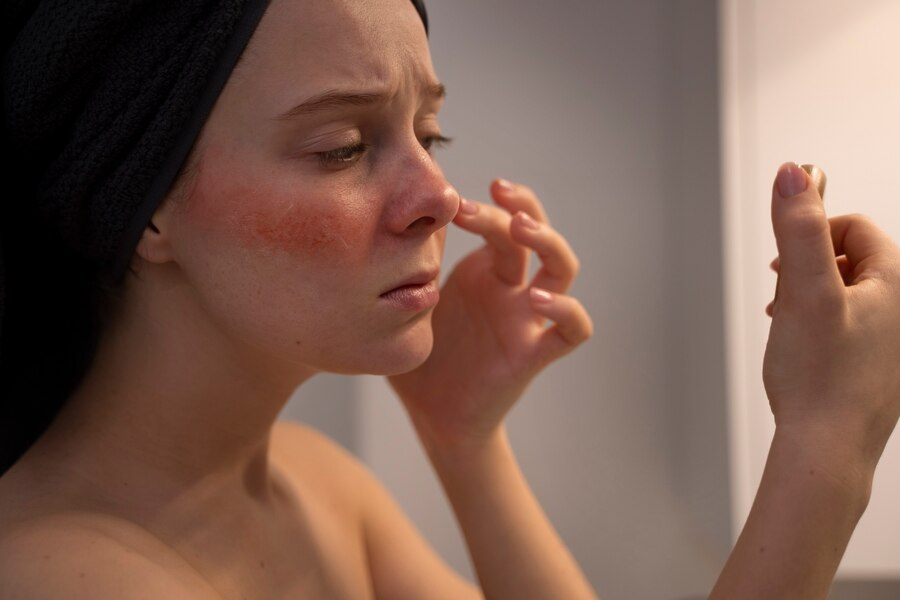
Flushed cheeks can occur for various reasons, from environmental factors like exposure to heat or the reaction to an embarrassing situation to underlying skin conditions such as rosacea or seborrhoeic dermatitis. Additionally, certain hormonal imbalances, often associated with disorders that elevate hormone levels, can lead to facial flushing. But did you know that a bright red rash on the cheeks can also be the result of a viral infection? One such cause is slapped cheek disease, a viral illness that primarily affects children and shockingly, is also contagious.
Table of Content:-
Also Read: How To Know If You Should Get That Rash Looked At
What Is Slapped Cheek Disease?
-1731392052582.jpg)
Slapped cheek disease, also called the fifth disease, is a contagious viral infection caused by a virus called parvovirus B19. The US Centers for Disease Control and Prevention (CDC) describe parvovirus B19 infection as usually mild in people who are otherwise healthy. Of the many parvoviruses, B19 is the one that only infects humans.
According to research published in StatPearls Publishing, parvovirus B19 spreads easily, especially among school-aged children. It's most prevalent during late winter, spring, and early summer. While young children have a lower infection rate (2-10%), adults are more likely to be infected, with rates ranging from 40-60% for those over 20 to 85% or more for those over 70. Outbreaks of this virus happen every 3-4 years.
However, when it particularly comes to parvovirus B19-caused slapped cheek disease, or erythema infectiosum, it is a common illness that mostly affects school-aged children between 5 and 15 years old, another study published in the StatPearls Publishing noted. It can also affect adults but is less common.
How Does Slapped Cheek Disease Appear?
-1731392063808.jpg)
Slapped cheek disease appears as a bright red rash on the cheeks. Additionally, it can cause a pink, lace-like rash on the chest, stomach, arms, and thighs, which may be itchy.
The rash usually lasts 7-10 days, but it can come and go for several weeks.
Other symptoms that may arise along with a red rash include:
- Fever
- A runny nose
- Sore throat
- Headache
- Fatigue
Also Read: Face Rash: 5 Home Remedies To Manage The Skin Condition
Why It Is Called A Fifth Disease
According to theCleveland Clinic, slapped cheek disease is called a fifth disease because it was the fifth viral skin rash known to affect children in a list of six conditions. The list is as follows:
- Measles
- Scarlet fever
- Rubella (German measles)
- Dukes’ disease
- Roseola
Treatment Options For Slapped Cheek Disease

Slapped cheek disease is a viral infection that usually goes away on its own and requires little to no treatment. To help ease symptoms, you can:
- Get plenty of rest.
- Drink lots of fluids to avoid dehydration.
- Take Over-the-Counter (OTC) medications to treat headaches, high temperatures, or joint pain.
- Apply a moisturiser lotion to itchy skin.
However, it is recommended to consult a doctor or a paediatrician in the case of a child if you have any suspicions of slapped cheek, or fifth, disease.
Also watch this video
How we keep this article up to date:
We work with experts and keep a close eye on the latest in health and wellness. Whenever there is a new research or helpful information, we update our articles with accurate and useful advice.
Current Version